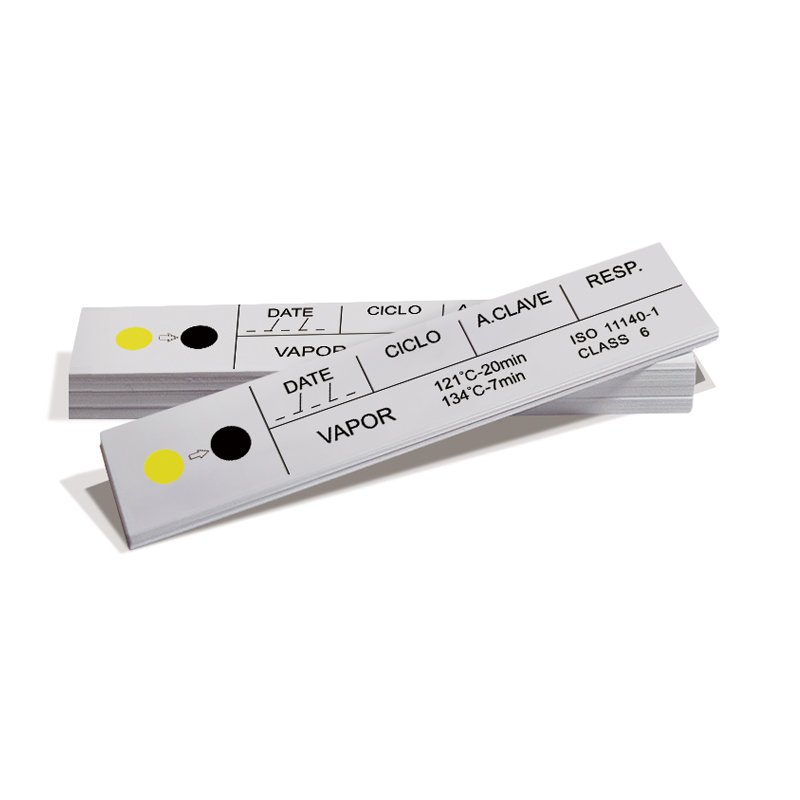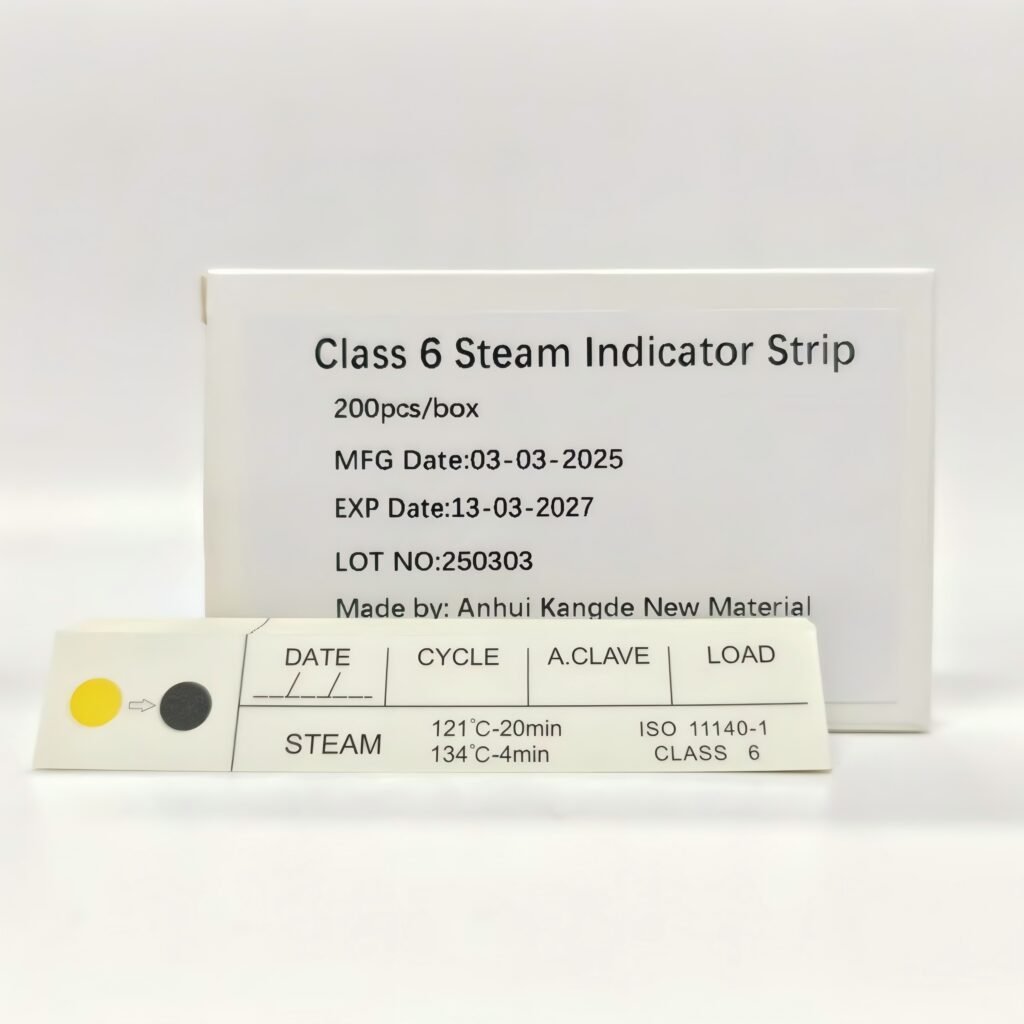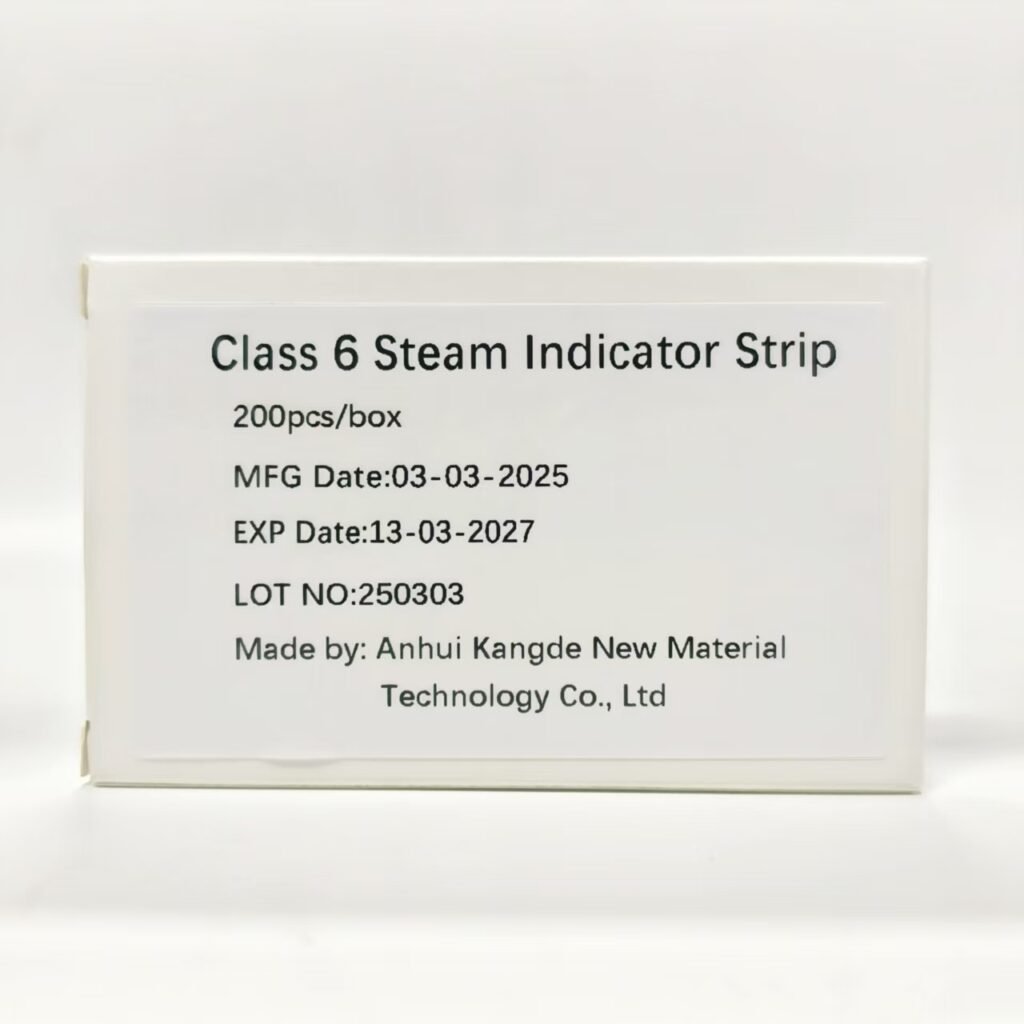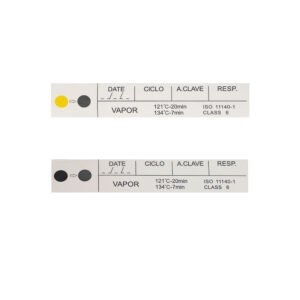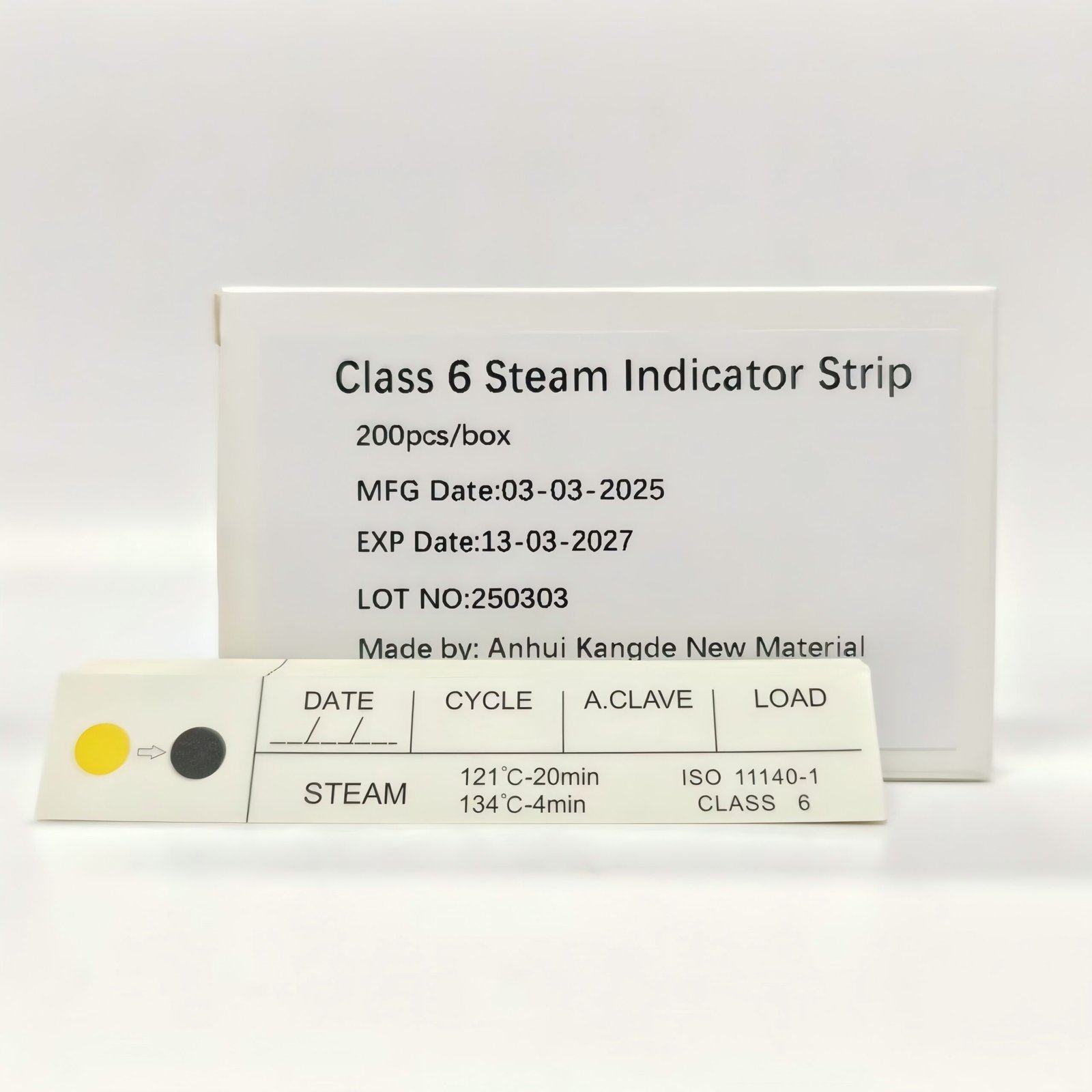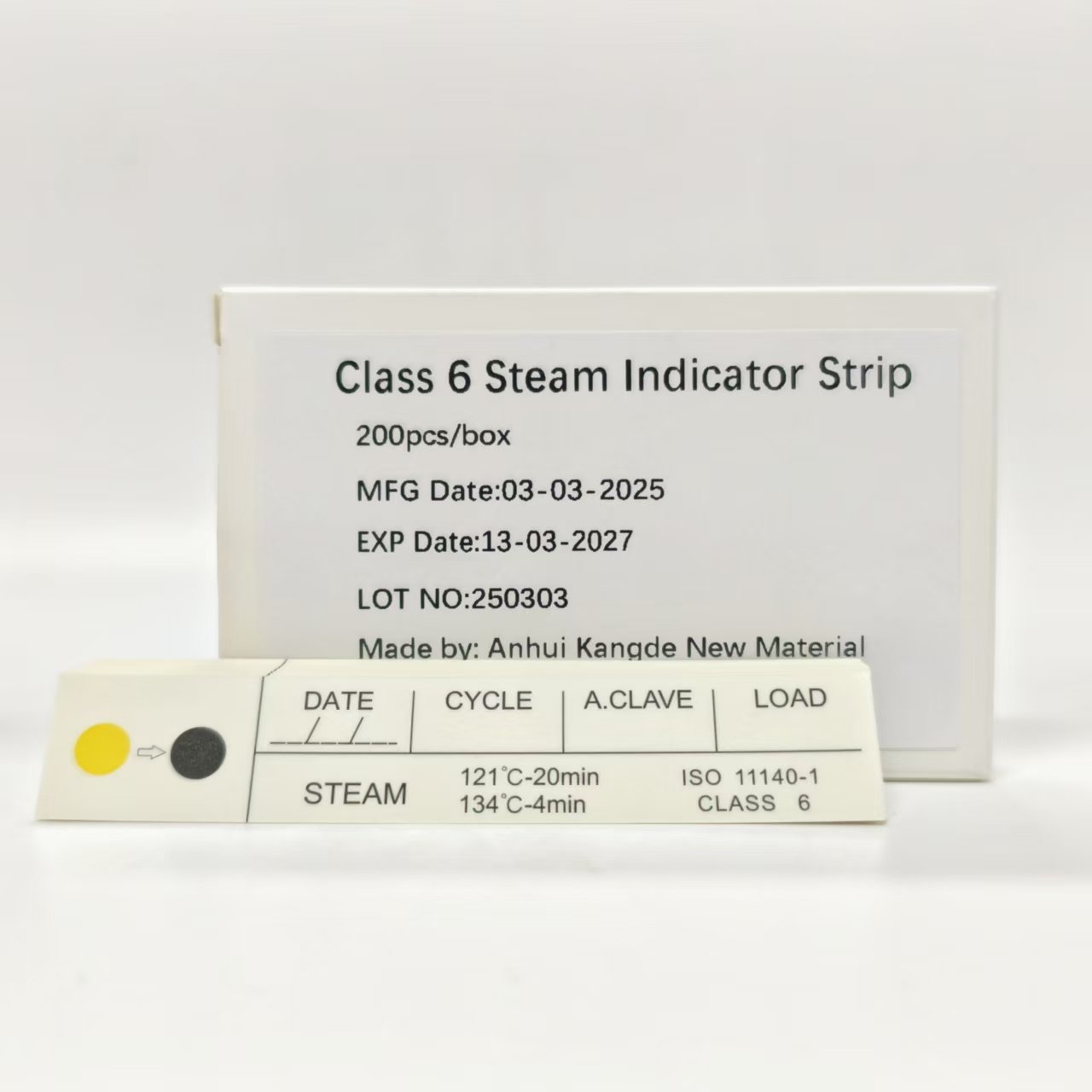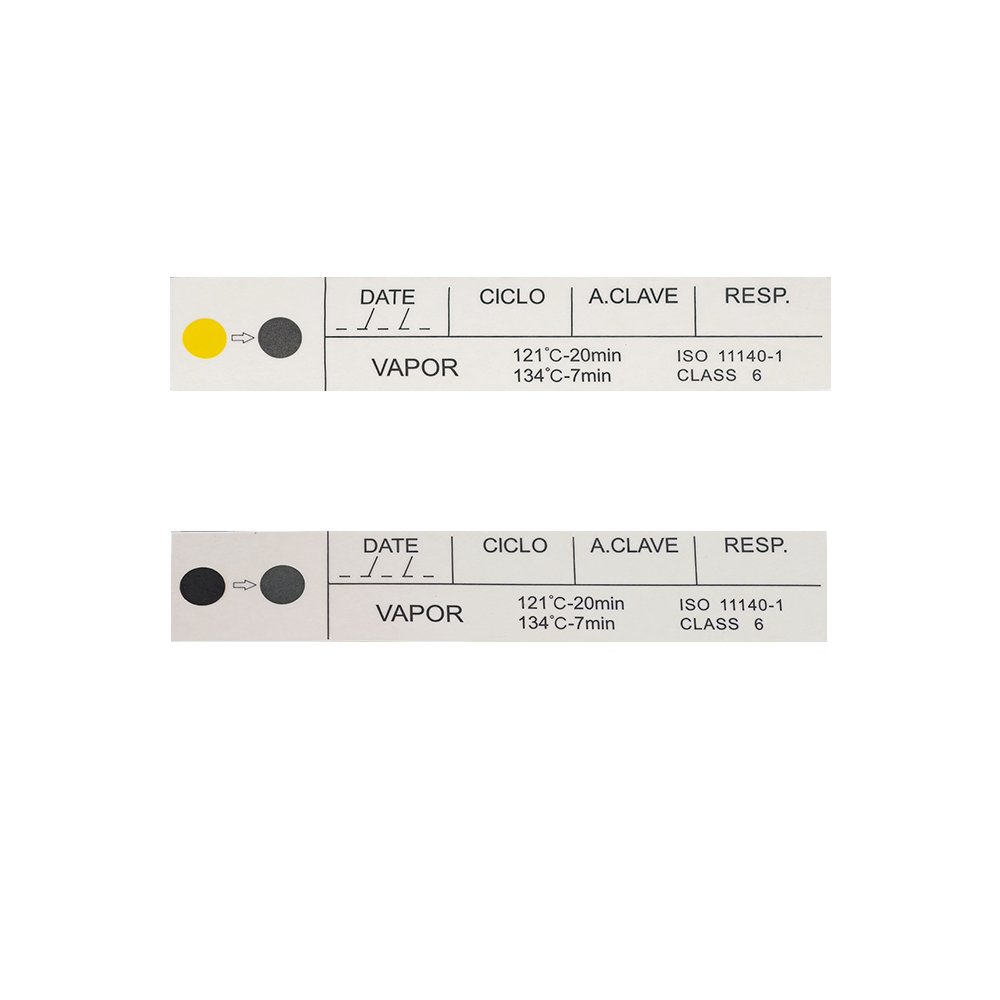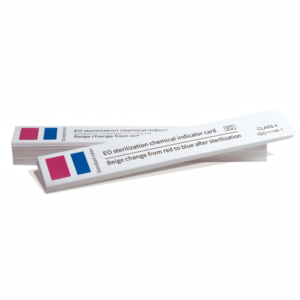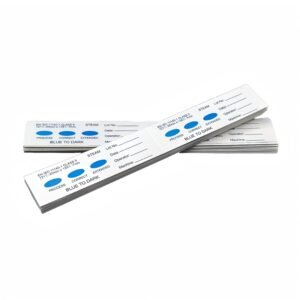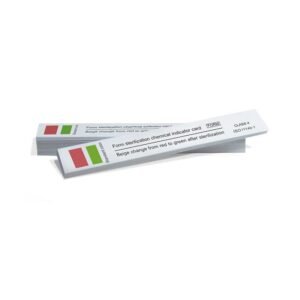Mô tả
Purpose: Class 6 Chemical Indicators are designed to provide a visual or chemical signal that verifies whether the sterilization process has reached the required conditions to effectively kill or inactivate harmful microorganisms. Conditions include specific temperature (our indicators can designing for T between 90C and 140C), time can adjust between 30 sec and 60 min) and pressure parameters.
Monitoring Sterilization: When placed with the items to be sterilized, Class 6 Chemical Indicators undergo a distinct and visible change when exposed to the sterilization conditions. This change acts as an immediate visual confirmation that the sterilization process has occurred as expected.
Types: Class 6 Chemical Indicators come in various forms, such as strips, labels, or tapes. They are usually affixed to or placed inside packages or containers of items to be sterilized.
Parameters Monitored: These indicators are specifically designed to monitor critical parameters like temperature and, in the case of steam sterilization, humidity or steam penetration (121/15 min, 134C/3.5 min/. For steam sterilization, they change color to black.
Routine Use: Class 6 Chemical Indicators are routinely employed in healthcare facilities, laboratories, and other environments where sterilization is crucial to ensure the safety of patients, healthcare workers, and researchers.
Complementing Biological Indicators: While Class 6 Chemical Indicators offer immediate feedback on the sterilization process, they are often used in conjunction with biological indicators, which involve the use of living organisms like spores to validate the effectiveness of sterilization. Biological indicators provide more comprehensive and time-consuming validation.
Compliance and Safety: The use of Class 6 Chemical Indicators is often a requirement to comply with regulatory standards and guidelines in healthcare settings. It helps ensure the safety of patients and the integrity of medical equipment and instruments.
Class 6 Chemical Indicators are essential tools for confirming that items have undergone effective sterilization. Their visual or chemical changes serve as immediate feedback to healthcare professionals, indicating that sterilization conditions have been met, and the items are safe for use in medical procedures or research. These indicators play a critical role in infection control and patient safety.
